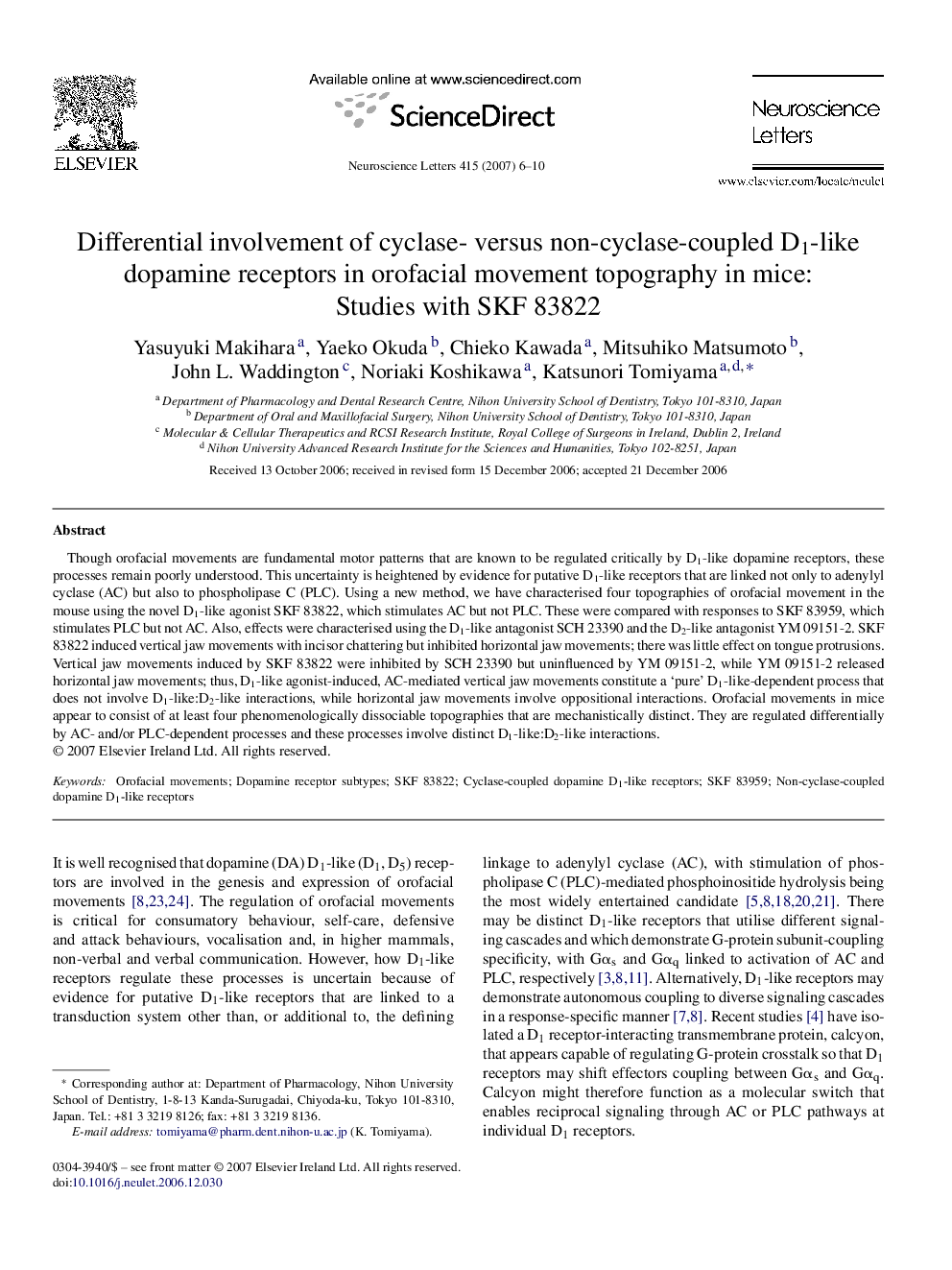| Article ID | Journal | Published Year | Pages | File Type |
|---|---|---|---|---|
| 4349653 | Neuroscience Letters | 2007 | 5 Pages |
Abstract
Though orofacial movements are fundamental motor patterns that are known to be regulated critically by D1-like dopamine receptors, these processes remain poorly understood. This uncertainty is heightened by evidence for putative D1-like receptors that are linked not only to adenylyl cyclase (AC) but also to phospholipase C (PLC). Using a new method, we have characterised four topographies of orofacial movement in the mouse using the novel D1-like agonist SKF 83822, which stimulates AC but not PLC. These were compared with responses to SKF 83959, which stimulates PLC but not AC. Also, effects were characterised using the D1-like antagonist SCH 23390 and the D2-like antagonist YM 09151-2. SKF 83822 induced vertical jaw movements with incisor chattering but inhibited horizontal jaw movements; there was little effect on tongue protrusions. Vertical jaw movements induced by SKF 83822 were inhibited by SCH 23390 but uninfluenced by YM 09151-2, while YM 09151-2 released horizontal jaw movements; thus, D1-like agonist-induced, AC-mediated vertical jaw movements constitute a 'pure' D1-like-dependent process that does not involve D1-like:D2-like interactions, while horizontal jaw movements involve oppositional interactions. Orofacial movements in mice appear to consist of at least four phenomenologically dissociable topographies that are mechanistically distinct. They are regulated differentially by AC- and/or PLC-dependent processes and these processes involve distinct D1-like:D2-like interactions.
Related Topics
Life Sciences
Neuroscience
Neuroscience (General)
Authors
Yasuyuki Makihara, Yaeko Okuda, Chieko Kawada, Mitsuhiko Matsumoto, John L. Waddington, Noriaki Koshikawa, Katsunori Tomiyama,
